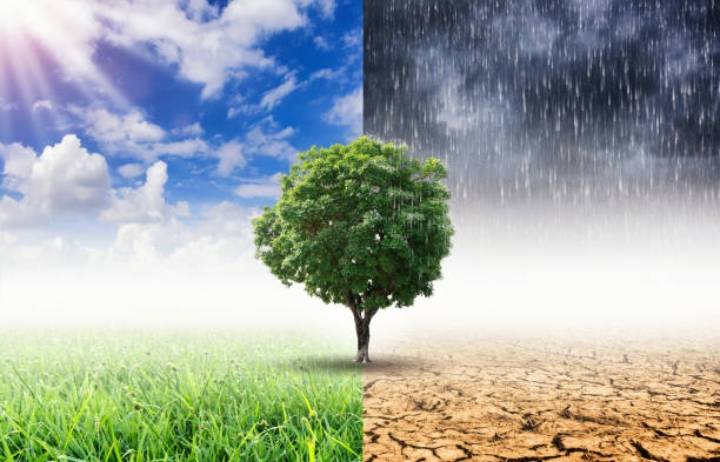Climate change refers to long-term shifts and variations in the Earth's climate patterns, resulting from both natural processes and human activities. These changes can have significant impacts on ecosystems, weather patterns, sea levels, and overall environmental conditions. Here are some detailed examples of climate change:
1. Rising Global Temperatures: One of the most prominent aspects of climate change is the increase in global average temperatures. Over the past century, the Earth's temperature has risen by approximately 1°C (1.8°F). This rise is primarily attributed to human activities, particularly the burning of fossil fuels, which release greenhouse gases into the atmosphere, trapping heat and causing the planet to warm.
2. Melting Arctic Ice: As temperatures continue to rise, the polar ice caps, particularly in the Arctic region, are melting at an alarming rate. This has profound consequences for the environment, wildlife, and Indigenous communities in those areas. For example, the melting of Arctic sea ice disrupts the habitat of polar bears, seals, and other marine wildlife that rely on ice formations for hunting and breeding.
3. Extreme Weather Events: Climate change is intensifying extreme weather events across the globe. Heatwaves, droughts, hurricanes, and heavy rainfall events are becoming more frequent and severe. For instance, the increased heat and prolonged droughts in regions like California have led to devastating wildfires, causing loss of life, destruction of homes, and ecological damage.
4. Sea-Level Rise: As global temperatures rise, glaciers and ice sheets are melting, contributing to a rise in sea levels. Higher sea levels pose significant risks to low-lying coastal areas and small island nations. For example, the Maldives, a nation comprised of low-lying islands, is particularly vulnerable to sea-level rise, which threatens their existence due to increased flooding and saltwater intrusion into freshwater supplies.
5. Ocean Acidification: The increase in atmospheric carbon dioxide levels due to human activities is causing the oceans to become more acidic. This process, known as ocean acidification, has detrimental effects on marine life, especially on coral reefs and shellfish. Coral bleaching, a phenomenon where corals expel the symbiotic algae they depend on, has become more prevalent due to ocean acidification, leading to the loss of biodiverse reef ecosystems.
6. Changing Rainfall Patterns: Climate change is altering rainfall patterns worldwide. Some regions experience more frequent and intense rainfall, leading to floods and soil erosion, while others face prolonged droughts and water scarcity. For instance, the Horn of Africa has suffered from recurring droughts, contributing to severe food crises and displacement of populations.
7. Impact on Agriculture: Climate change affects agricultural productivity and food security. Changes in temperature, precipitation patterns, and increased pest outbreaks can harm crop yields. Additionally, shifting climatic conditions may require alterations in traditional farming practices and crops grown in certain regions.
These are just a few examples of how climate change manifests in different aspects of the environment and society. They demonstrate the urgency of taking action to mitigate climate change and adapt to its impacts to ensure a sustainable future for all.


